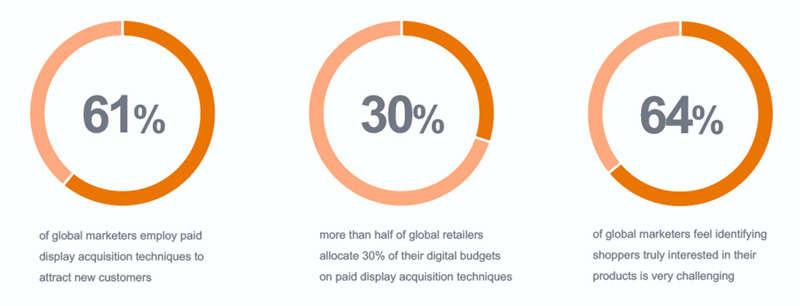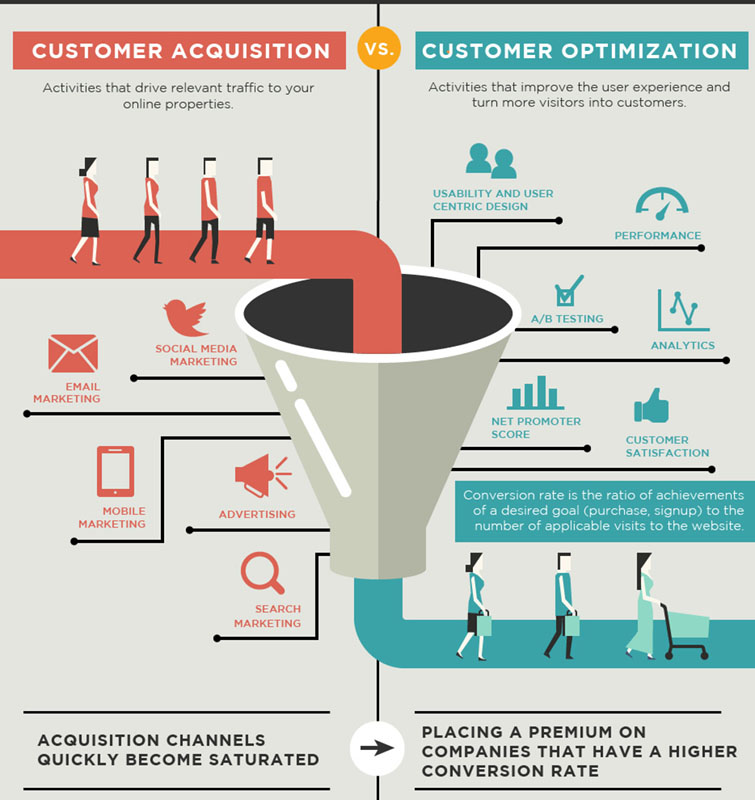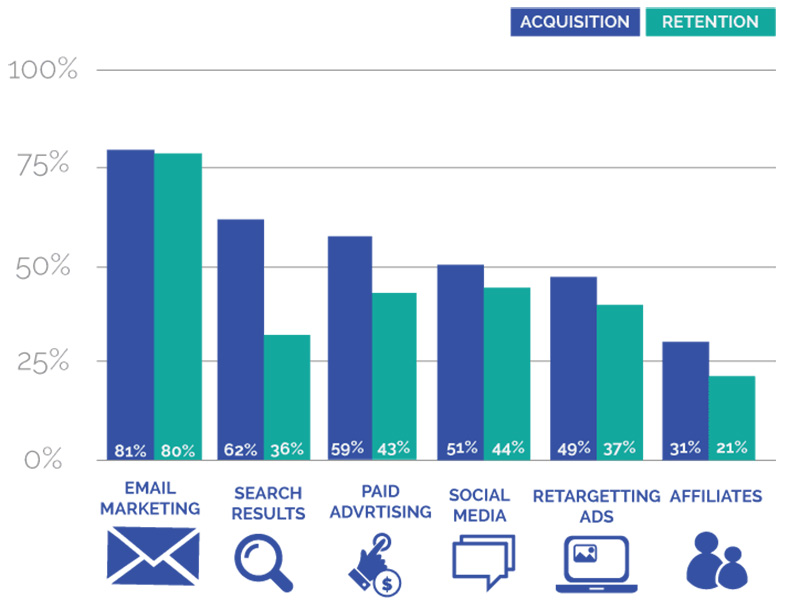The fashion industry has a notoriously loyal customer base, with brands continually presenting consumers with the latest trends and must have items. However online fashion markets have become increasingly competitive, especially since more brands took to eCommerce as the COVID-19 pandemic forced them to find alternatives to brick-and-mortar stores.
With such a saturated online market, customer acquisition has become increasingly complex. This is magnified by the changing environments facing eCommerce businesses, with issues such as data privacy beginning to change the way in which brands are able to understand their customers before sending out marketing campaigns. We take a look at how fashion brands could adapt their customer acquisition strategies to compete in the changing online marketplace.
Defining customer acquisition
Customer acquisition sounds relatively self explanatory, and on a fundamental level, that is true. However, the type of person an acquisition marketer will target is not someone who needs to be made aware of a brand’s existence – they’re a little further down the line than that.
What customer acquisition does is to convert the initial curiosity in a brand into repeat sales and customer loyalty. To maximize marketing ROI, therefore, marketing teams must first be aware of where to direct their efforts when it comes to acquisition.
In many ways, customer acquisition is as much a responsibility for the customer service team as the marketing department. It is important that both work closely to maximize customer acquisition.
Setting goals for customer acquisition strategies
Customer acquisition needs to go far beyond transforming one query into one sale. One of the main goals of customer acquisition for brands is to establish consumer loyalty and repeat business, with the obvious benefits being the apparent revenue it will generate. Still, it can also act as a marketing strategy within itself with established customers helping to drive traffic through positive word-of-mouth testimonies.
As well as the immediate benefit of sales, having a large customer database and a proven record of repeat business can make brands more attractive to investors and suppliers whose products they want to sell. A good customer acquisition strategy should provide a constant stream of customers rather than peaks and troughs to ensure the long-term health of an operation.
Customer acquisition strategies for fashion brands
Whilst the fashion industry may seem to have mastered strong brand imagery and awareness strategies, customer acquisition relies on more than just this. Converting awareness into action can be done in several ways by utilising the many online tools available to marketers. We explore some of the old and new ways in which brands can work to achieve high customer acquisition rates.
Content marketing
Content marketing may sound like an obvious tool for customer acquisition, however it is far more complicated than simply posting a meme or writing blog content. The reason content marketing works well as an acquisition marketing tool is that it encourages repeat traffic to websites beyond the initial curiosity.
Content can establish brand voice and identity and engage customers beyond a brief browse. It can also work hand-in-hand with online fashion stores by providing relevant content. For example, listicle articles like ‘the ten best summer accessories’ or ‘the five must-have sweaters for the Fall’ encourage customer engagement and can link through to eCommerce stores.
Adwords and paid searches
Driving traffic to brand websites is essential for customer acquisition. Using Adwords or other paid search facilities can be a major advantage in getting a head start on the competition. Furthermore, this is a cost effective approach which is widely used.
It is important for brands to moderate their keywords when running paid searches, as the right keywords can help to place businesses on top of Google searches. Looking out for industry trends and being in tune with buying patterns and seasons is a must for successful campaigns.
Social media
There are a variety of ways in which social media can be used to drive customer acquisition. With several popular platforms and many more niche ones, social media provides a blank page on which to build brand image and set customer expectations. Businesses have the opportunity to engage audiences and create meaningful experiences between customers and brands.
Organic
Organic content for social media is cost effective and a great tool for fashion brands. With the industry being so fluid, creating a place where customers can interact as a community can encourage conversations between brands and their consumers. This can lead to a greater understanding of what the customers needs and wants as well as how they are reacting to new products or campaigns.
Organic content can also be a low risk way to try new ideas in a space where the audience can give immediate feedback and opinions. Customer acquisition is as much about getting to know the customer as it is getting that customer to convert their interest into repeat sales. In this way, opening up organic conversations on social media is a great way to build your customer profiles without relying on disappearing cookie data.
Paid social
While social media relies on building up a mass of followers, paid social can bypass all that with sponsored posts. For fashion brands seeking customer acquisition, these posts need to be appealing, fresh and, importantly, unobtrusive. Paid social, pitched right, can provide high ROIs, but if they are too aggressive or ill-fitting, then their forced presence in someone’s timeline or newsfeed is going to seem intrusive.
Influencers
Working with influencers can be a great way to reach an audience base which is already predisposed to convert their interest into a sale. Influencers have loyal followings who are highly likely to purchase products that are recommended to them by their favorite influencers.
This dynamic is magnified when it comes to micro-influencers who have a smaller amount of followers who are even more loyal. When it comes to fashion brands, a product recommendation from an influencer can feel like shopping with a friend, as well as motivate followers who want to emulate the lifestyle and looks of the influencers they like, making it a strong customer acquisition strategy.
Blogging
Fashion is an ideal industry for blogging. Having an informed regular blogger can pay dividends when it comes to customer acquisition in fashion. A well-respected fashion blogger can write articles about what trends they are predicting for what season or inform readers about what they are wearing.
Blogging shows a great knowledge of the industry and, especially for fashion brands, can help set agendas and trends for customer bases to follow.
Guest bloggers are also a useful way to increase the impact of a blog whether it is designer, buyer or fashion-conscious celebrities who want to share their tips and secrets. Fashion is a very visual medium too, and that’s why video blogging can also prove useful in customer acquisition. It allows brands to show customers how their products can be worn and what goes with what.
Email marketing
Because customer acquisition relies on utilizing an existing customer base, email is an extremely effective way of generating repeat business and brand loyalty. In a world of social media, email may seem a bit old fashioned, but it can often be a more forensic and personal way for fashion brands to engage with customers.
Email can have high conversion rates because it allows businesses to tailor communication to people who are more likely to engage. Informing customers of upcoming sales and offers is a standard email marketing tactic. Granting subscribers exclusive access to certain online offers or giving them early VIP access to sales and events is a great way to show that they are valued as well as driving conversions.
Email marketing also allows brands to get out ahead of certain holidays, seasons and events.
Apps
Apps may seem like a left-field when it comes to the fashion industry, however shopping apps are a great way to increase customer engagement and acquisition. Brands have the opportunity to constantly introduce new products and trends without seeming too pushy – since the customer chose to download the app.
Push notifications can alert the audience to new products or deals when they’re on-the-go, creating a more consistent brand experience. Shopping apps also reduce the path-to-purchase, often with single click checkout options since the customer’s payment and delivery details can be stored securely within the application. Apps can also be a good way to understand the behaviours of the customer base and therefore to drive more targeted customer acquisition strategies.











